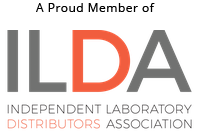-
- Consumables
- Cell Culture Dishes (106)
- Bags (227)
- Cell Culture Flasks (109)
- Cell Scrapers and Lifters (10)
- Cell Strainers (16)
- Consumables Recycling (35)
- Cuvettes (73)
- Filter Membranes (1726)
- Filtration Devices (1183)
- Gloves (906)
- Inoculation Loops, Spreaders, Needles (84)
- Incubation Trays (22)
- Microplates (425)
- Microscope Slides (330)
- Pasteur Pipets (15)
- Pipette Tips (711)
- Reservoirs (55)
- Tubes and Vials (770)
- Transfer Pipettes (126)
- Sealing Film (120)
- Serological Pipettes (160)
- Weighing Boats and Papers (81)
- Reagents
- Extraction Isolation and Purification Kits (1434)
- Agarose (28)
- Culture Media (1161)
- Gel Electrophoresis (26)
- Nucleotides (42)
- Nucleic Acid Isolation & Purification (98)
- qPCR Master Mix Kits (133)
- Recombinant Proteins (284)
- Water (58)
- Western Blot (40)
- Antibodies (45960)
- Hyclone Media (521)
- Equipment
- Bottletop Dispensers (318)
- Chiller (123)
- Scales and Balances (1187)
- Calibration Weights (9)
- Centrifuges (236)
- Incubators (93)
- Microbiology Incubators (27)
- Digital Burettes (32)
- Freezer Racks (552)
- Freezers and Refrigerators (647)
- Homogenizers (72)
- Hotplates and Hotplate Stirrers (88)
- Hotplate Stirrer Accessories (31)
- Lab Jacks (20)
- Microplate Mixers (20)
- Microscopes (58)
- Ovens (135)
- Overhead Stirrers and Stirrers (215)
- Pipettes (406)
- Roller Bottles (49)
- Roller Mixers (12)
- Rotary Evaporator (49)
- Seating (10)
- Shakers and Rockers (334)
- Thermal Cyclers (10)
- Tube Racks, Cryoboxes & Coolers (411)
- Vacuum Pump
- Water Baths (215)
- Test and Measurements (14)
-

Quick Overview
Conjugation: Purified, BSA-free Genus/Species: Mus musculus (mouse) Size: 50 uL, 1 Each
Details
TIMs are type I transmembrane glycoproteins with one Ig-like V-type domain and a Ser/Thr-rich mucin stalk. TIM-3 is expressed on the surface of effector T cells (CD4 Th1 and CD8 Tc1) but not on helper T cells (CD4 Th2 and CD8 Tc2). In chronic inflammation, autoimmune disorders, and some cancers, TIM-3 is upregulated on several other hematopoietic cell types. The Ig domain of TIM-3 interacts with a ligand on resting but not activated Th1 and Th2 cells. The glycosylated Ig domain of TIM-3 binds cell-associated galectin-9. This induces TIM-3 Tyr phosphorylation and pro-apoptotic signaling. TIM-3 functions as a negative regulator of Th1 cell activity. Its blockade results in increased IFN-gamma production, Th1 cell proliferation and cytotoxicity, regulatory T cell development, and increases in macrophage and neutrophil infiltration into sites of inflammation. Primary antibodies are available purified, or with a selection of fluorescent CF® Dyes and other labels. CF® Dyes offer exceptional brightness and photostability. Note: Conjugates of blue fluorescent dyes like CF®405S and CF®405M are not recommended for detecting low abundance targets, because blue dyes have lower fluorescence and can give higher non-specific background than other dye colors.
Additional Information
| Brand | Biotium |
|---|---|
| UNSPSC | 41116161 |
| Size | 50 uL |
| Clonality | Monoclonal |
| Concentration | 1 mg/mL |
| Features | N/A |
| Target | N/A |
| Reactivity Species | N/A |
| Host | Mouse |
| Conjugation | No |
| Antibody Line | N/A |
| Antibody Type | Primary Antibody |


